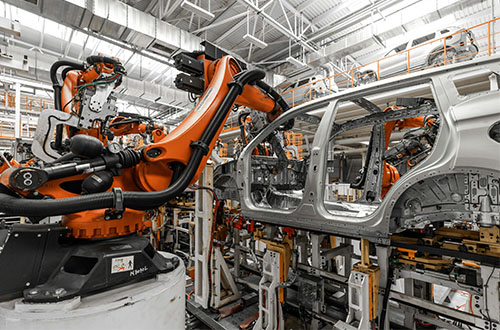

Here’s Why You Need to Automate Your Cloud Migration

Every business struggling with the limitations of their outdated on-premise or mainframe database has considered the advantages of moving to the cloud. The ability to access new technology on demand, to scale capacity, and associated costs, up and down as needed, plus the chance to shed data center expenses and licensing fees, are all strong incentives to modernize.
So what stops businesses and agencies from making the move to the cloud? Time and again, research shows the top stumbling blocks are concerns over a lengthy, disruptive and costly transition process that distracts in-house IT staff from mission-critical tasks.
Cloud migration has spiked over the last couple of years, with the advent of Covid-19 accelerating this trend as more and more businesses could no longer put off transitioning to technology that gives them crucial agility and cost efficiencies. A recent Gartner survey predicts that by 2025, 51% of IT spending for application and infrastructure software, business process services and system infrastructure will shift from traditional solutions to the cloud.
But moving applications and workloads to the cloud requires extensive recoding, a process that, if done manually, is prone to high rates of human error that gobble up time and budget. Moreover, a labor-intensive enterprise-wide transformation performed by in-house staff is virtually guaranteed to cause business disruptions.
Automated migration to the rescue!
Automated cloud migration technology is turning out to be the game-changer for organizations looking for a more cost-effective, faster way to migrate business applications and workloads to a more agile, scalable, and flexible computing platform on the cloud. Some of the top reasons?
Accelerated timelines
Moving your organization’s applications and workloads to the cloud is a monumental task, one that demands the concerted effort of your whole IT team from the initial planning and assessment all the way through to cut-over and deployment. It also requires an end-to-end roadmap that ensures all mission-critical applications are securely moved to the cloud without any glitches, a prospect that becomes even more challenging for large enterprises running massive and dispersed data repositories.
But, as with many precise, repetitive and iterative tasks, automation can optimize and accelerate output. Thus, an automated cloud migration tool, with its high-speed data conversion capability, allows organizations to migrate data in a much faster, more consistent and accurate way.
Automated conversion lets you translate data from multiple repositories into the uniform, compatible format needed to operate seamlessly on your destination cloud architecture, minimizing risks to both mission-critical data and business continuity. It also neatly sidesteps common human-resource shortcomings, including lack of focus and precision, as well as lack of communication and collaboration across dispersed teams. Automated cloud migration also frees your in-house IT team to concentrate on the tasks that drive your everyday business.
Dramatically reduced costs
Manual transitions to the cloud also come with a hefty price tag. A survey by McKinsey reveals inefficiencies during traditional migrations cost businesses on average fourteen percent more than initially planned. Globally, the aggregate cost adds up to billions in overspend.
Of equal concern: thirty-eight percent of companies see their projects prolonged by more than one fiscal quarter, even leading some to curtail the planned scope of the project, which adds up to more time, money and effort for less payoff.
Meanwhile automated migration software, by deploying superfast, error-free recoding, substantially shortens the timeline to move all in-scope applications to the cloud. The results are higher speed, increased accuracy and reduced costs during the project and even greater ROI once you’re deployed in the cloud.
Fewer time-consuming errors
According to a 2020 Accenture Cloud Outcomes report, one in four organizations faces unforeseen issues during cloud migration. Manual recoding is at best a balancing act between speed and accuracy, with potential pitfalls that can be as drastic as significant data losses or malfunctions with critical applications, issues that can not only disrupt business continuity but erode trust with customers.
That’s why, for large enterprises, an automated migration tool provides a key advantage, speedily refactoring code while proactively identifying critical gaps between existing and destination code structures to forestall potentially devastating database and application failures.
Optimized migration of mission-critical applications
Manual migration can also pose risks to mission-critical business applications. A painstaking endeavor, these transitions require expert orchestration of interdependent applications and workloads to ensure each component works synergistically both during and after the migration process.
Additionally, manual migration methodology takes substantial time and effort, which can impact optimal functioning of applications your business relies on every day. By contrast, automation simplifies and streamlines this web of tasks and processes, ensuring both defects and fixes are promptly communicated across all teams and instances far more efficiently than in manual efforts.
Transition smarter
Moving enterprise applications and workloads to the cloud demands extensive coding tasks, including refactoring, rearchitecting, and rebuilding, which take many staff hours and comprehensive expertise in all aspects of cloud architecture - resources most in-house IT teams can’t provide. Automated migration is a faster, more reliable approach that helps organizations migrate their heavyweight applications and data to the cloud with optimum accuracy and efficiency, while diverting fewer IT resources.
Automation also lets you keep doing business seamlessly before, after and - crucially - during a cloud migration project. What’s more, the efficiencies of time and money that automation can deliver will ensure you get the most out of every dollar spent.
For more information on automated recoding to migrate your distributed and mainframe workloads to the cloud, in one-third the time and half the cost of traditional migrations, contact us at Modernize-Now@mLogica.com.








































